Discovering Trucky Platform
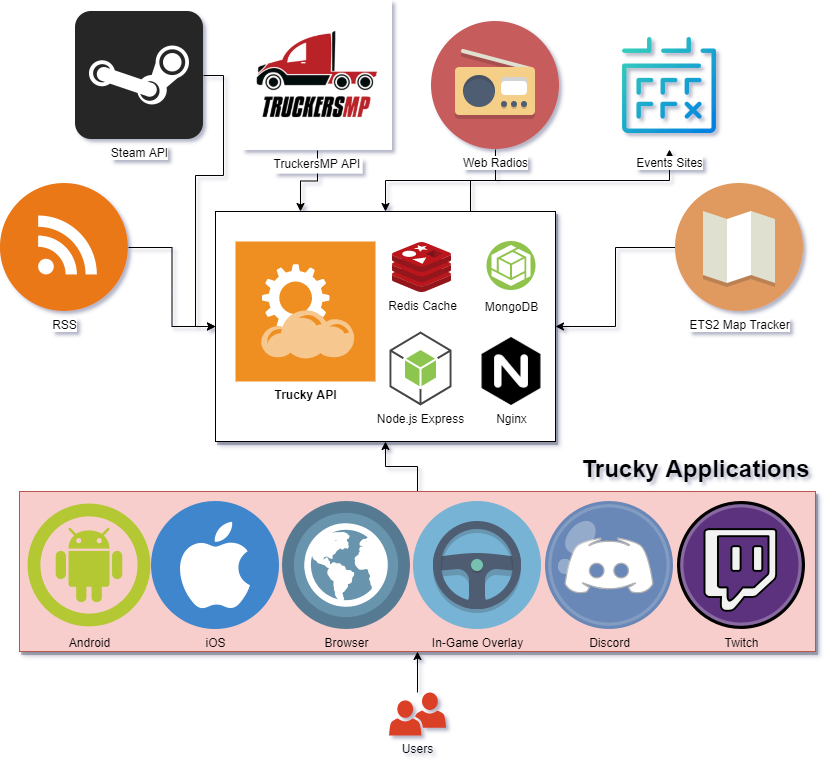
Trucky was born as an experiment in mid 2017. It was simply an excercise to learn React Native, a popular mobile development language created by Facebook based on Javascript and with the simplicity to write once and deploy the same code on Android and iOS.
First version was published on Play Store in May 2017 and on Apple Store some months after. At that time, the Trucky API server was based on a free Heroku node. Lately, adding a real API layer, was moved to a virtual server with limited resources, then on another virtual server with more resources and finally on a dedicated server with SSD and a good amount of resources.
Today i will explain how the Trucky Platform works, with some deep details and showing some numbers, maybe it’s interesting only for more technical people but everyone like numbers and graphs 😀

Some fancy numbers
Trucky is now used worldwide by thousands of users every day on many platforms.
The Android app has recently reached 14k active devices, the iOS one follow with 8k active devices.
TruckyBot for Discord is proudly serving 3751 guilds and 149k users. The Twitch counterpart is used by 224 streamers.
The Overlay has passed the 8k downloads.
Since its introduction, users have sent more than 40k real time traffic alerts.
The nicest thing of managing a worlwide used platform, give access to bigdata, it’s really nice see those bubbles “pulse” every second.
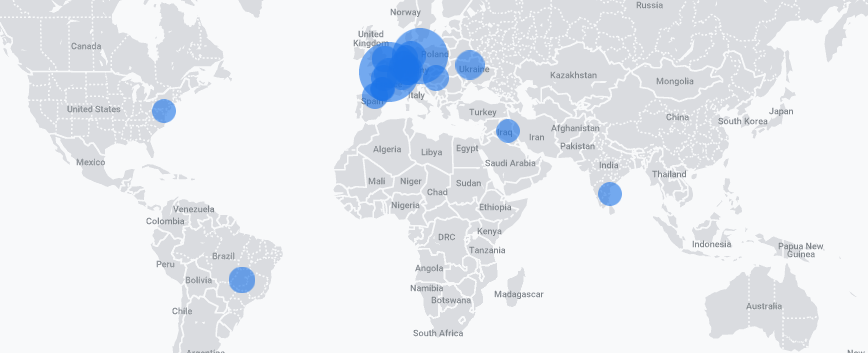
Cloudflare edge statistics
Cloudflare is a great platform and a great help with DNS and to control traffic with its firewall rules.
Above all, shows great statistics how people interact with the platform. March 2020 showed an increment of 12% in traffic, probably due to lockdowns for COVID-19 pandemic, people started to use Trucky more and more.


How Trucky works
Basically, open the app, use the Discord Bot, or the Overlay, and receive datas, realtime updates collected and aggregated from multiple sources. But how does it really work?
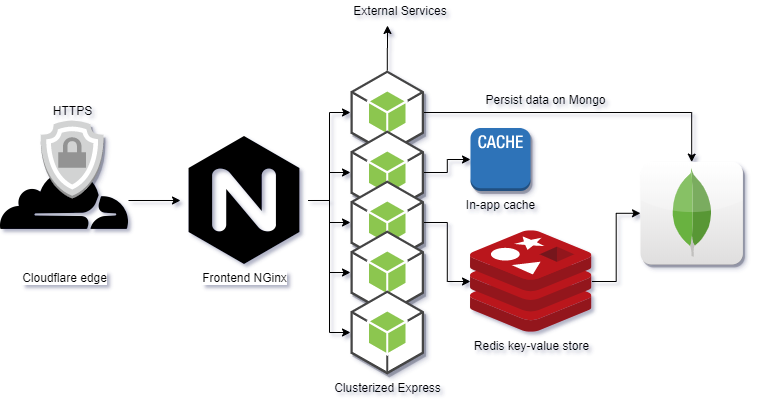
The platform stack, for the application part, is Node.js based. The frontend is an NGinx proxying traffic towards internal applications, both for HTTP and websocket connections. The traffic is handled by a clusterized Express app to share traffic and load on mulitple nodes.
When a call hit the API, based on which data is requested, Redis handles the first line to serve quickly the cached data without having to go on remote services like TruckersMP or Steam. As the data is retrieved, part of it is saved locally on a MongoDB database for backend processing.
Every object in cache has it’s own sliding expiration so, based of type of data contained, it expires alongside other related data to have always the freshest information possible when requested from the user.
MongoDB is used as a “relational No-SQL” database, thanks to Mongoose, data inside collections are related each other at application level but maintaining the No-SQL paradigm at rest.
Another cache is maintained at application level, some data is cached directly in app process to improve perfomances on heavy load calls like location resolution or traffic management.

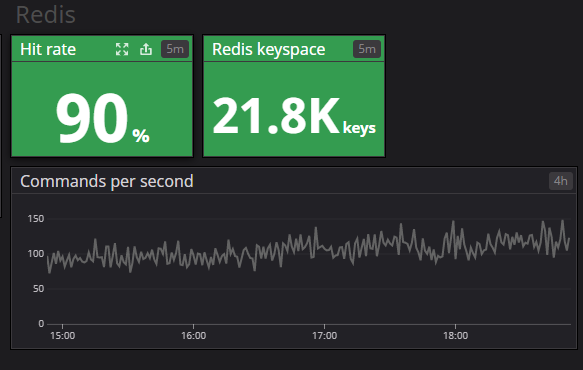
Backend magic
Some work is done at backend level, behind the curtain of the frontend chaos, there are scheduled tasks launched by crontabs to collect data from external services and persist in Mongo, already calculated and normalized.
Futhermore, some tasks, for example, are in charge to send push notifications to users (friends online, new news published…) or calculate traffic.
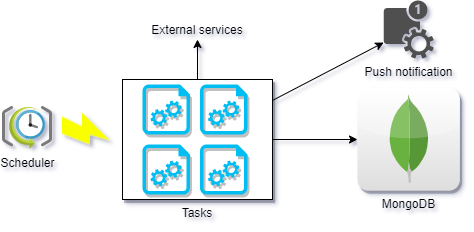
Trucky apps
TruckyBot for Discord is based on Node.js and Klasa and TruckyBot for Twitch is a Node.js app based on tmi.js and and twitch-commando (https://github.com/shardick/twitch-commando).
Trucky Web, the web version of the mobile app, it is a React application.
The Overlay is one of the lastest additions to the Trucky applications’ landscape, it uses a mix of C++ plugin for Telemetry and React application served inside Overwolf, a great tool to bring web based apps inside games.
Trucky.Events is, instead, a Laravel+MySQL website.
Live Map and Traffic System
The live map is a little “diamond”. Although showed players are not Trucky based (but, hey, we haven’t got that data), it’s one of the most used tools from the community.
Behind it, there is the punctual work of the Trucky Service Team, at every map and DLC update, they are ready to map new areas, add countries, cities and points of interest.
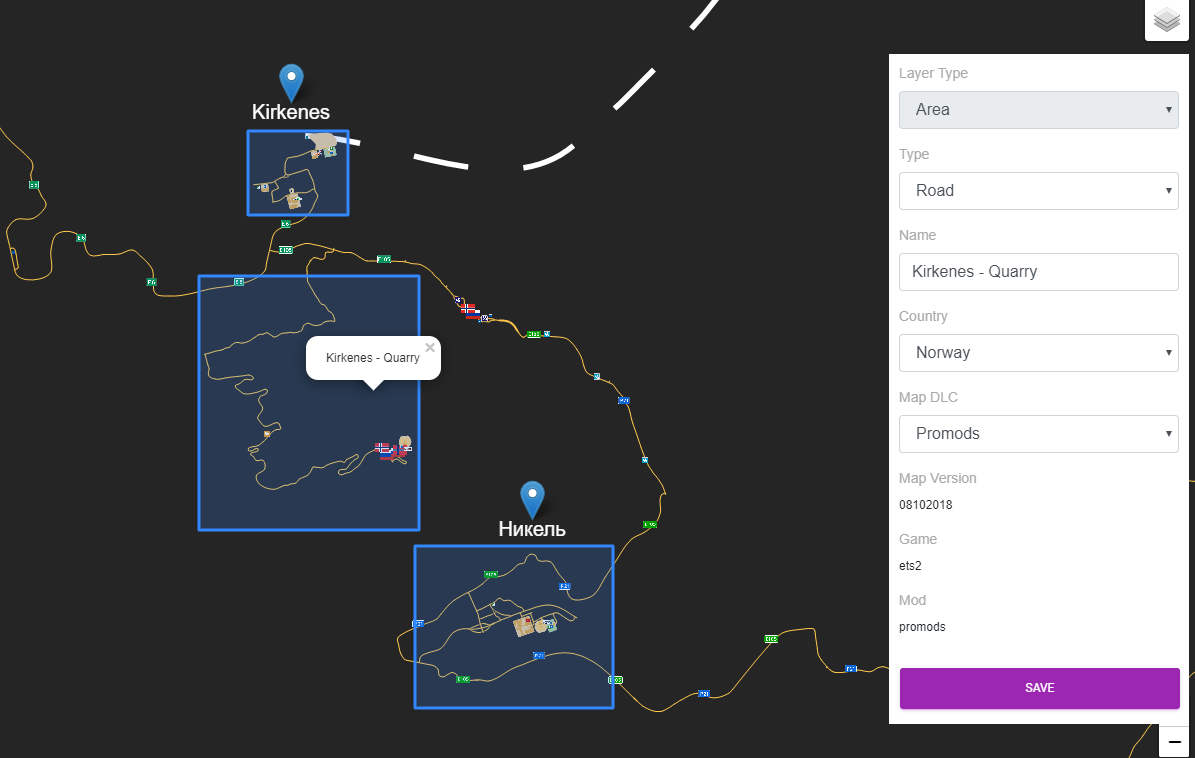
Other features like location resolution used widly from bots and VTRPC and traffic system, are based on live map data and GPS utilities.
Traffic is calculated using ETS2map data and some math and geolocation algorithm. Maybe it is not always precise and affordable, due to how we design areas (a future implementation is to use polygons instead of simple rectangles) but Trucky has traffic jams detections. How does it works? With a Clustering DBSCAN. The algorithm analize players position in area with relation to time and speed, if they are too near each other and with a low relative speed, well, there is a traffic jam!

Increasing load and traffic
As downloads are increasing, many people are using Trucky Apps’ and this also increased also the overall server load.
We are searching for new ways to let apps communicate without overwhelming the server but infrastructure has its limits, as RAM, CPU or Disk I/O.
Soon, some part of the platform will arrive to a breakpoint.
Recent Posts
- Major Update: Trucky VTC Application System Overhaul
- Trucky 3.2.x Release: Major Updates and Cross-Platform Enhancements
- Trucky HUB Updates: New Features for Enhanced Company Management and Roleplay
- Fleet Management Gets a Major Upgrade with Trucky Dealership’s Used Market
- Feature Preview: New Visual Themes
Categories
Archives
- July 2025
- June 2025
- May 2025
- February 2025
- December 2024
- June 2024
- May 2024
- January 2024
- December 2023
- November 2023
- September 2023
- August 2023
- July 2023
- June 2023
- May 2023
- April 2023
- March 2023
- February 2023
- January 2023
- November 2022
- October 2022
- September 2022
- July 2022
- June 2022
- May 2022
- March 2022
- February 2022
- January 2022
- November 2021
- October 2021
- September 2021
- August 2021
- July 2021
- June 2021
- May 2021
- April 2021
- March 2021
- February 2021
- January 2021
- December 2020
- October 2020
- September 2020
- August 2020
- July 2020
- June 2020
- May 2020
- April 2020
- March 2020
- December 2019
- October 2019
- September 2019
- May 2019
- February 2019
- December 2018
- November 2018
- October 2018
- August 2018
- July 2018
- June 2018
- May 2018
- April 2018
- March 2018
- February 2018
- January 2018